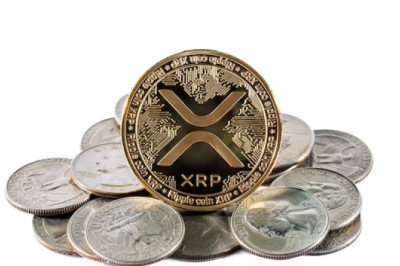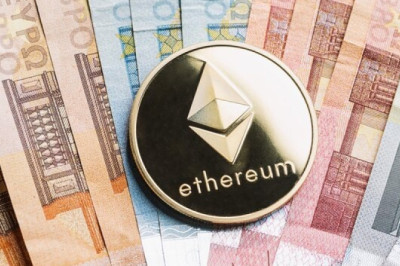Euro to United States Dollar Exchange Rate: Current Trends and Analysis
The Euro to United States Dollar (EUR/USD) exchange rate is a barometer not just for currency traders, but also for policymakers, businesses, and regular consumers who engage with the global economy. As of January 24, 2025, the EUR/USD exchange rate stands at approximately 1.0453, a slight uptick from the previous day, showcasing the dynamic and often unpredictable nature of this financial relationship.
Recent Developments
Over the past few weeks, the EUR/USD pair has been navigating the intricate labyrinth of economic indicators and geopolitical tensions, often teasing the 1.0500 threshold. Influenced chiefly by mixed PMI (Purchasing Managers' Index) readings from the US, this exchange rate has experienced bullish momentum recently, hitting a peak of 1.0470 during early European trading hours before settling around the 1.0450 mark later in the day.
The fluctuations are not merely numbers on a screen—they resonate deeply with lives across Europe and the United States. From the small business owner in Berlin contemplating exports to the United States to American consumers keeping an eye on European goods, the exchange rates bridge economies and personal lives in significant ways.
Economic Indicators
Economic data releases are like puzzle pieces that help traders and policymakers forecast the potential direction of currency movements. The preliminary January HCOB Manufacturing and Services PMI report, for instance, is anticipated to have considerable influence on the future trajectory of the EUR/USD exchange rate. Should the reports indicate stronger-than-expected performance across Germany and the Eurozone, the Euro could gain momentum. Conversely, dismal numbers may signal trouble ahead and lead to a decline.
While eyes remain fixed on the Eurozone, the attention inevitably shifts to the United States. The S&P Global PMI data serves as a key indicator, giving insights into the private sector's economic vigor. A reading that dips below the neutral threshold of 50 would indeed signify contraction—a worrisome sign for the USD and could catalyze renewed selling pressure on the American dollar.
Understanding these economic indicators is not just for investors. For the average American who may be planning a vacation to Europe or for a European family considering a summer road trip across the States, these stats can have tangible implications on purchasing power, travel budgets, and even dining experiences during their adventures.
Geopolitical Factors
In the realm of finance, the line between economic indicators and geopolitical factors is often blurred. Recent remarks from U.S. President Donald Trump regarding trade policies have stirred the waters of the EUR/USD exchange rate. His stance against implementing tariffs on China has tended to favor a more optimistic market sentiment, subsequently making it trickier for the USD to maintain its ground.
However, his comments on tackling the trade deficit with the EU while indicating potential tariff hikes on European imports introduce a sense of uncertainty. Such commentary not only rattles traders but could also unsettle European exporters who depend heavily on the USD's demand. The potential ramifications ripple through stock markets, influencing not just big corporations but also the daily lives of workers and families who heavily depend on these industries.
Technical Analysis
Technical tools such as the Relative Strength Index (RSI) can provide an additional layer of insight into the market dynamics. According to RSI on the 4-hour chart, the EUR/USD might still have room for an upward movement before reaching overbought territory. Traders shall be keying into pivotal resistance levels between 1.0500 to 1.0510, with a further ceiling at 1.0540. On the flip side, should there be a downturn, the support levels at 1.0440 and 1.0400 will likely be tested.
Similar to economic indicators, technical analysis serves a broader purpose; it aids not just large-scale traders but also everyday savers or retirees looking into foreign investments to safeguard their wealth against inflation.
Market Outlook
With an intricate interplay of data releases and geopolitical developments coming down the pipeline, market analysts have their work cut out for them in forecasting the EUR/USD exchange rate. The PMI reports from Germany and the US, alongside any further declarations from President Trump regarding US trade policies, will serve as crucial junctures, shaping investors' perceptions and likely movements.
For those outside the trading floor, the implications are significant. Anyone planning international travel or making purchases across borders is ultimately affected by these exchange rate fluctuations. A favorable exchange rate can make that dream trip to Italy more affordable, while an unfavorable turn can strain budgets.
Conclusion
As the EUR/USD exchange rate remains highly sensitive to economic indicators and geopolitical developments, the importance of staying informed cannot be understated. In this global economy that is increasingly interconnected, even the slightest variation in the exchange rate can have cascading effects felt around the world.
Consumers, traders, and investors alike should remain vigilant, maintaining awareness of upcoming data releases, economic analyses, and policy announcements. Empowered knowledge ultimately aids in making informed decisions, whether that’s planning a family vacation, making crucial business investments, or simply managing day-to-day finances in an ever-changing landscape. The EUR/USD exchange rate is not just a number; it reflects an ongoing narrative—a story of globalization, economic aspirations, and personal impacts that shape lives across the Atlantic.













Comments
0 comment